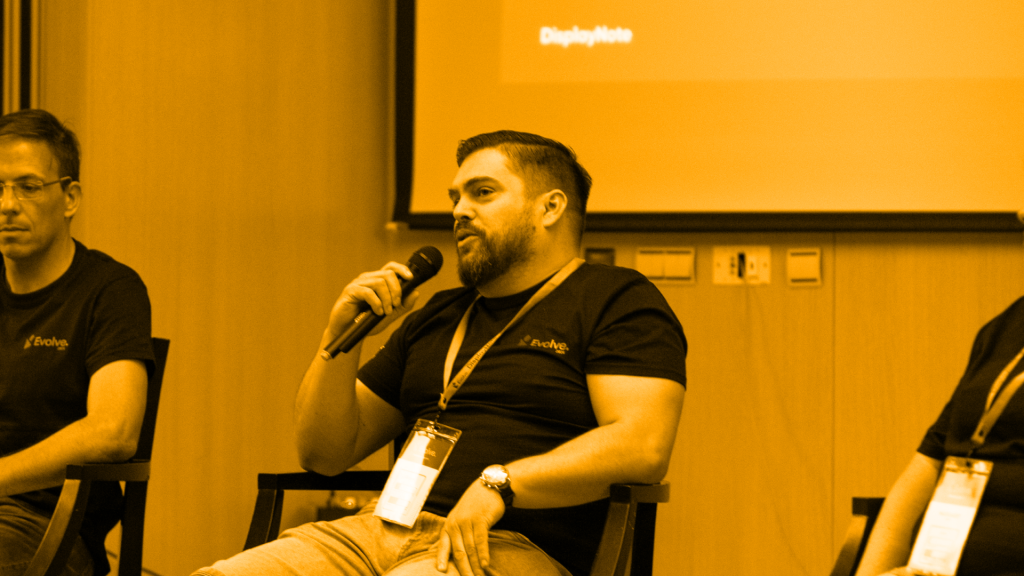
Presentation tips: transforming presentations into an emotional journey.
Think academic presentations and you’ll probably not think of storytelling techniques used in great cinema. Think again. We caught up with Dr Jane Lugea, Research Fellow at the Stylistics Research Centre, University of Huddersfield and Assistant Editor atBabel Magazine to hear how she uses empathy, captivating content and story arcs to transform her presentations into an emotional journey.
What’s your approach in terms of preparation, timing, getting feedback. Can you share any presentation tips?
Before preparing my research for presentation, I always consider the audience first; who are they, what is their level of knowledge or specialism. This allows me to pitch my research accordingly. I arrange my topic using Powerpoint slides – I find Powerpoint useful for drafting as well as the actual presenting. I never write a script, as I think this is the ultimate way to bore your audience. The whole point of a live presentation is the human interaction – why use a script when you could just have emailed it around and not bothered turning up? Instead, I use the notes function on the software, or prepare my own handwritten notes to jog my memory of certain things to mention when the slides are up. Then I practice several times and make sure my timing is right. It’s a big no-no in my books to overrun – it’s disrespectful of your audience and the event organizers. I’ll also try to predict any questions that might arise and make sure I have answers prepared. A good tip is to build an obvious question into your presentation so that it can come up in the subsequent Q&A – this is particularly useful if there is an aspect of your research that you really want feedback on or dialogue from the audience.
Do you think about story arc?
Absolutely. I think for the first couple of slides you need to let the audience settle in, and contextualise your presentation a bit. They will still be getting used to the sound of your voice, your accent, and thinking about ‘where you’re coming from’ in all senses of the phrase. For these reasons, jumping straight into complex ideas is not a good idea. In my field of linguistics, research questions are a good place to start, followed by an outline of the framework(s) used, the methodology, and finally the findings and analysis. So there is a logical narrative structure that we tend to follow. However, not every presentation will fit that format. Even when it may not, I try to have some kind of logical progression. For example, when lecturing I might engage the students by presenting them with a presumption with which they probably all agree and then debunking it through linguistic analysis of examples. That way the students’ are actively engaged in seeing language through new perspectives.
What tactics do you use to get the audience on side?
I think that if it’s clear you have thought about the audience in advance, and not just your subject matter, that helps to get them on side. There is nothing worse than going to a research presentation, where the presenter has thought only about their research and not how to present it. Other tactics are a warm, friendly manner, and humour, but only if the latter comes naturally and is appropriate. I think the aforementioned method of coming to a new realization together during the presentation, is a great way of gaining rapport and buy-in from your audience.
How do you sort competing ideas?
Well in my case, these are usually theories of language. I would tend to use one slide per theory and outline the main points. Sometimes, this can be represented on a table format so that the competing theories can be compared easily across several variables, but that depends on the nature of the theory.
How do you typically start? Anecdote, question or your main point first?
If it is a research seminar, where I am presenting to academic colleagues, I usually start with research questions. These lead neatly on to how you went about conducting your research and your findings. If it is a lecture, I might pose an idea to the students and ask them what they think of it, then go on to explore it during the lecture, challenging their presumptions.
Do you think about your audience – who they are, their mindset?
Always. I think it’s the single most important thing you can do in a presentation. Academics can often bury their heads into their profound research and forget that they need to pitch it to the audience at the right level. As well as wondering about their prior knowledge and experience of my topic, I consider the context of my presentation. If it’s after lunch, and a long morning of panel presentations in a conference in a hot climate, I’ll try to make sure my presentation is lively and not sleep-inducing.
You deal with a lot of data; do you have any presentation tips on making data emotional?
This is a tricky one. Reams of figures and graphs can be hard to connect to. I think it’s important that your audience understands the emotional significance of your work though, and one way to do this is to provide illustrative examples alongside the data. I know I switch off sometimes when presented with other people’s research in quantitative formats, and an example can help to hit home the effects.
Want to stay in the loop?
Keep up-to-date with everything DisplayNote – including new releases, job openings, and customer giveaways.
Don’t worry, we’ll not spam you and we’ll never share your email with anyone






